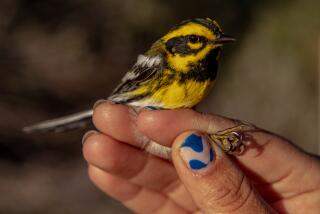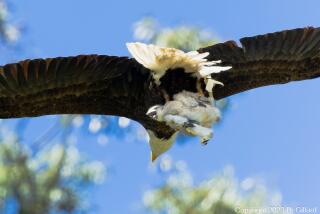UC Scientists Swap Beaks of Birds
- Share via
Call them “qucks” and “duails.”
With a little egg tinkering, scientists replaced a duck’s flat bill with a quail’s pointy beak, breeding some funny-looking birds.
But University of California scientists who switched birds’ beaks had more than an avian oddity in mind: The experiment uncovered some of the key cellular players in bird evolution, and may even lead to a better understanding of what causes facial birth defects such as cleft palate in humans.
Beaks all derive from similar-looking tissues in early bird embryos, said Jill Helms, an orthopedics researcher at UC San Francisco. To find out what makes them turn out dramatically different, she and colleague Richard Schneider picked two birds with unmistakable beaks -- ducks and quails -- and tried to get them to grow each other’s.
They took 36-hour-old duck and quail embryos from an incubator and drilled small holes in the eggs encasing them. Using the tiniest of needles, Schneider sucked out the cells that seemed to give rise to beaks, called neural crest cells, from duck embryos and replaced them with neural crest cells from quail embryos, and vice versa.
The ducks grew pointy quail beaks and the quails grew that distinctive flat duck bill, the researchers reported in Friday’s edition of the journal Science.






